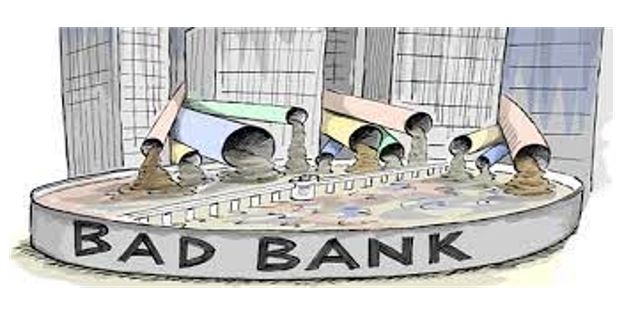Bad Bank – Needs, Pros, and the Cons

Context: Indian Finance Minister recently announced that the National Asset Reconstruction Company (NARCL) along with the India Debt Resolution Company (IDRCL) will take over the first set of bad loans from banks and try to resolve them.

This topic of “Bad Bank – Needs, Pros, and the Cons” is important from the perspective of the UPSC IAS Examination, which falls under General Studies Portion.
What is a ‘bad bank’?
A ‘bad bank’ is a financial entity set up to acquire non-performing assets (NPAs), or bad loans, and resolve them.
The need:
- The aim of setting up a bad bank is to help ease the burden on banks by taking bad loans off their balance sheets and getting them to lend again to customers without constraints.
How does a bad bank perform?
- After the purchase of a bad loan from a bank, the bad bank may later try to restructure and sell the NPA to investors who might be interested in purchasing it.
- A bad bank makes a profit in its operations if it manages to sell the loan at a price higher than what it paid to acquire the loan from a commercial bank.
- However, generating profits is usually not the primary purpose of a bad bank — the objective is to ease the burden on banks, of holding a large pile of stressed assets, and to get them to lend more actively.
Will a ‘bad bank’ help ease the bad loan crisis?
- Bailing out banks through a bad bank does not really address the root problem of the bad loan crisis. Because public sector banks are managed by bureaucrats who may often not have the same commitment to ensuring private bank lenders’ profitability.
- The safety net provided by a bad bank gives the commercial banks more reason to lend recklessly and thus further exacerbates the bad loan crisis.
Will it help revive credit flow in the economy?
- Some experts believe that by taking bad loans off the books of troubled banks, a bad bank can help free capital that is locked in by banks as provisions against these bad loans.
- This will give banks the freedom to use the freed-up capital to extend more loans to their customers.
- This gives the impression that banks have unused funds lying in their balance sheets that they could use if only they could get rid of their bad loans.
- It is, however, important not to mistake banks’ reserve requirements for their capital position. This is because what may be stopping banks from lending more aggressively may not be the lack of sufficient reserves which banks need to maintain against their loans.
What are the pros and cons of setting up a bad bank?
Pros:
- A supposed advantage in setting up a bad bank, it is argued, is that it can help consolidate all bad loans of banks under a single exclusive entity.
Cons:
- A bad bank backed by the government will merely shift bad assets from the hands of public sector banks, which are owned by the government, to the hands of a bad bank, which is again owned by the government.
- Unlike a bad bank set up by the private sector, a bad bank backed by the government is likely to pay too much for stressed assets.
- While this may be good news for public sector banks, which have been reluctant to incur losses by selling off their bad loans at cheap prices, it is bad news for taxpayers who will once again have to foot the bill for bailing out troubled banks.
Practice Question for Mains
- Of what good is a bad bank to solve the problem of non-performing assets or bad loans? (15 Marks, 250 Words).

